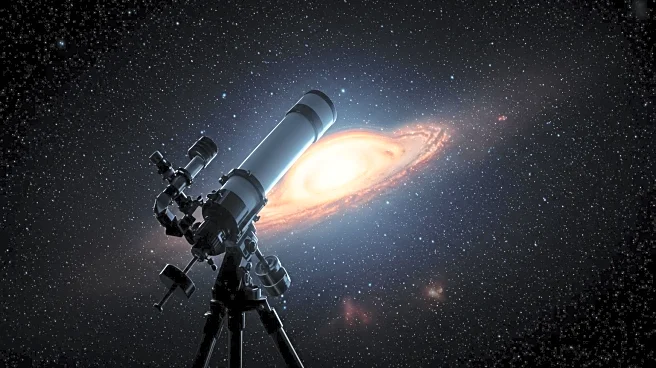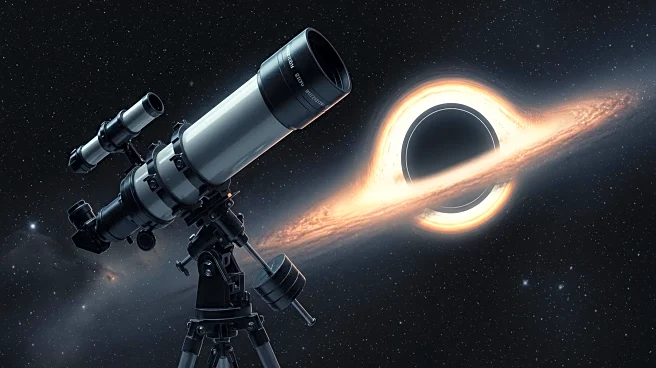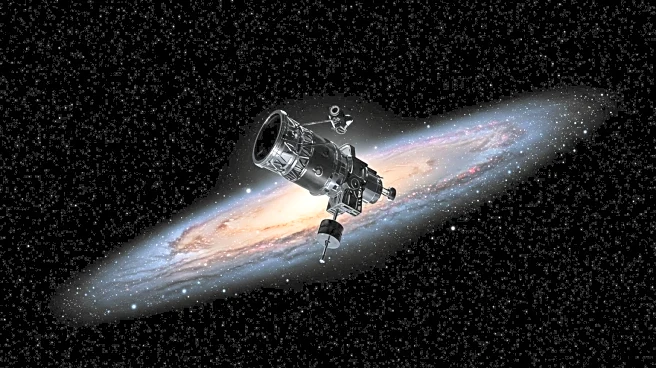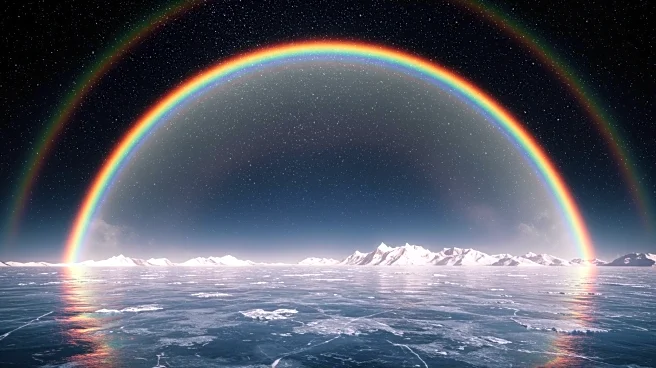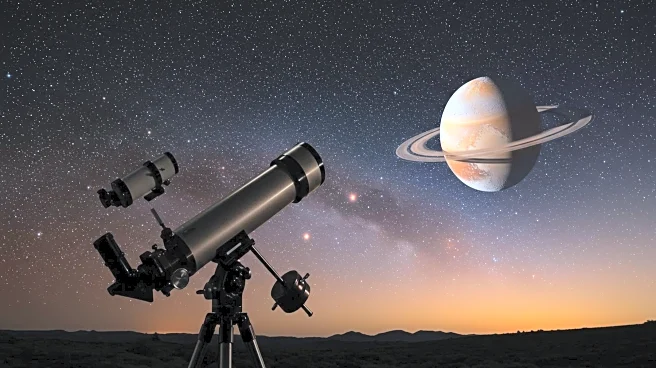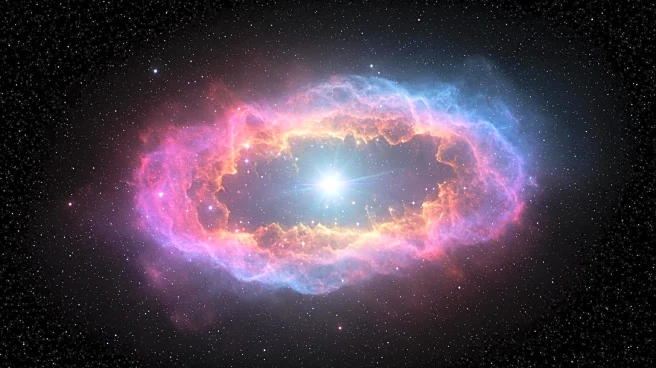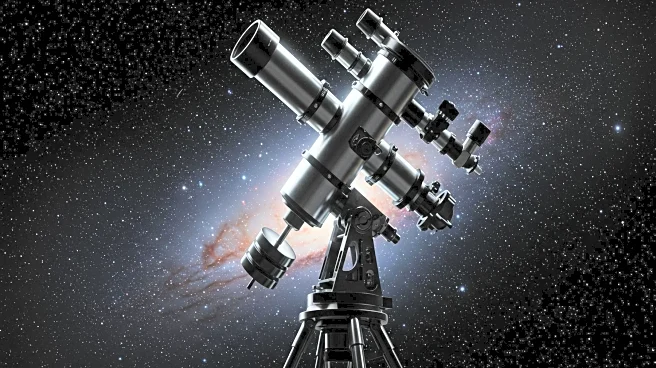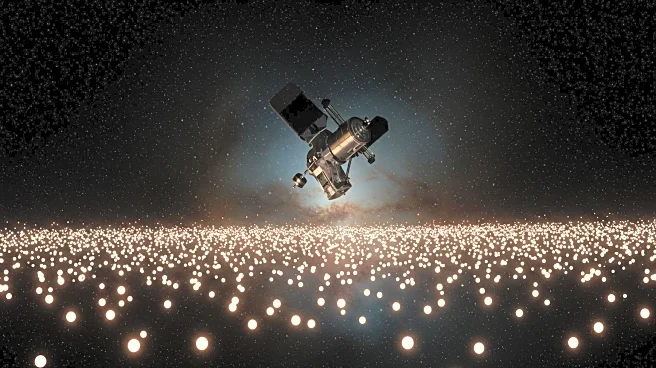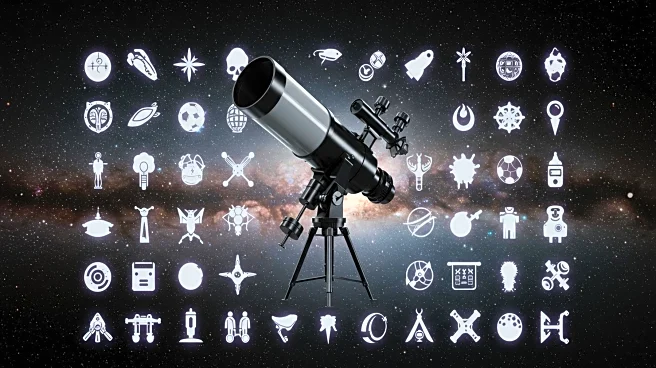What is the story about?
What's Happening?
Researchers using the James Webb Space Telescope have discovered a surprising pattern in the rotational direction of ancient galaxies, suggesting that approximately 60% of these galaxies rotate clockwise. This finding challenges existing cosmic theories and has led to a bold hypothesis that our universe might be within a massive black hole. The discovery has sparked intense debate within the scientific community, offering new perspectives on cosmic principles and the universe's origins.
Why It's Important?
The discovery made by the James Webb Space Telescope could have profound implications for cosmology, potentially reshaping our understanding of the universe's structure and behavior. If the hypothesis that the universe is within a black hole is validated, it would require a reevaluation of existing cosmological models and theories. This could lead to new insights into the nature of space-time and the fundamental laws governing the universe. The findings highlight the importance of continued exploration and observation in advancing our knowledge of the cosmos.
Beyond the Headlines
Alternative explanations, such as observational bias, suggest that the observed galactic alignment might not indicate any inherent cosmic order. Addressing these biases is essential to ensure the integrity of future research and validate the findings. The discovery underscores the challenges faced in making precise astronomical measurements and the need for refined telescopic techniques and calibration methods.
AI Generated Content
Do you find this article useful?
